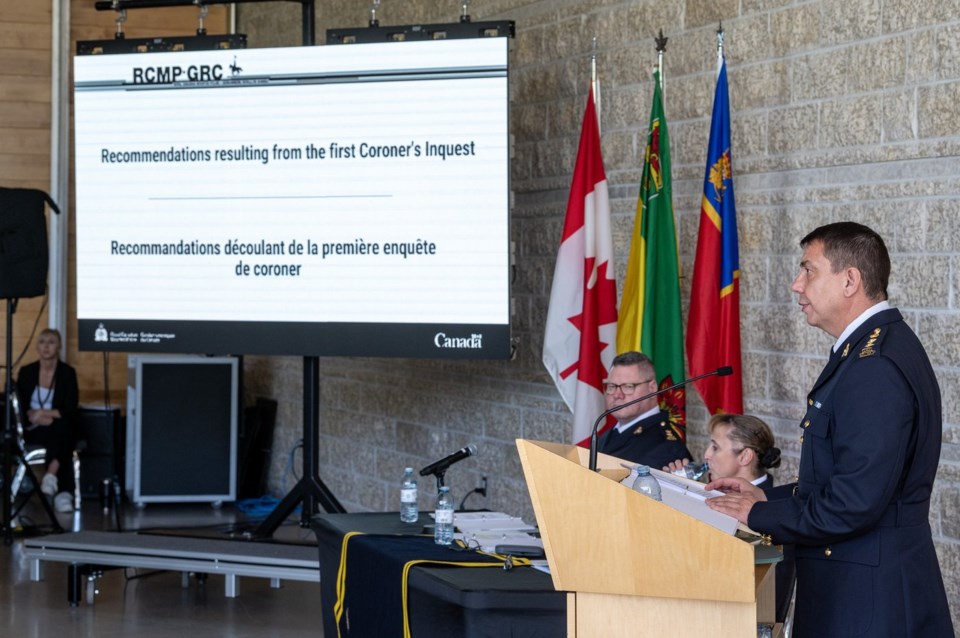REGINA — RCMP released a report Thursday into how Mounties responded to a mass stabbing in Saskatchewan. Myles Sanderson killed 11 people and injured 17 others on the James Smith Cree Nation and in the nearby village of Weldon on Sept. 4, 2022. He died of a cocaine overdose three days later, shortly after he was taken into police custody.
Here are some of key points from the report:
No fundamental issues
On a broad level, the report didn't identify any "common underlying circumstance" that significantly impeded the RCMP's ability to manage its response. It did, however, find areas where the RCMP can make improvements.
Appropriate response time
The report says it took 37 minutes for officers to arrive at the scene after the initial 911 call. One officer had to wait for his partner to arrive at the Melfort RCMP detachment, which the report says was the correct course of action, before they drove 40 kilometres to the First Nation. The response time was appropriate, the report says, and the call for dispatch “could not have been streamlined more than it already was.”
Need for two police cars
The report says RCMP should look at whether the two officers who first arrived at James Smith should have taken two vehicles instead of one. It says an additional car may have been helpful, as they decided to split up after getting there. The report says deploying the most members and vehicles possible to a scene is ideal but not always possible in rural areas.
Clearer chain of command
At times it was unclear who was in charge of overall command, the report says. During a pursuit of the stolen truck Sanderson was in, two lead commanders made the call to force the vehicle off the road. But they didn't loop in another commander who was in charge of overseeing tactics.
"Air boss" required
There was a lapse in communication when pilots with the police air unit didn't know who they should be taking direction from. Aircrews were inundated with requests, which had them flying "with little purpose." The report says the RCMP needs to have one flight co-ordinator. Mounties say they have since changed procedures and will assign an "air boss."
Plane needs fixing
A Saskatchewan RCMP plane was not operational during the manhunt for Sanderson. A plane from the Saskatoon Police Service was used instead. The report says RCMP plane upgrades need approval from the Saskatchewan government. It says Mounties hope progress can be made in updating the plane.
Some tips not relayed
People called in sightings of Sanderson in the town of Wakaw during the manhunt, but the report says some of that information never made its way to those in charge. One tip came from a caller who knew Sanderson. The report recommends a closer link between the police emergency operations and the call centre.
Victims services team effective
Officers allowed families to grieve and hold ceremonies before the victims' bodies were removed for autopsies. Sweats and smudges took place in the community, and officers kept victims up to date on the status of their homes that required restoration.
Support for victims services staff
The report recommends victims services employees have access to the same wellness programs as officers. It says those who helped victims felt burned out and had little support. The RCMP says it will make sure these supports are in place.
Regular communication with First Nation
The jury at a coroner's inquest into the deaths recommended RCMP meet regularly with James Smith Cree Nation leadership and attend community events. The RCMP says it meets with the First Nation on a quarterly basis to discuss crime trends and promote safety.
This report by The Canadian Press was first published June 6, 2024.
Jeremy Simes, The Canadian Press




